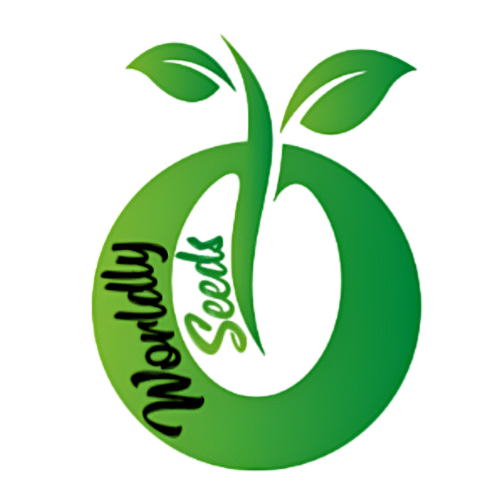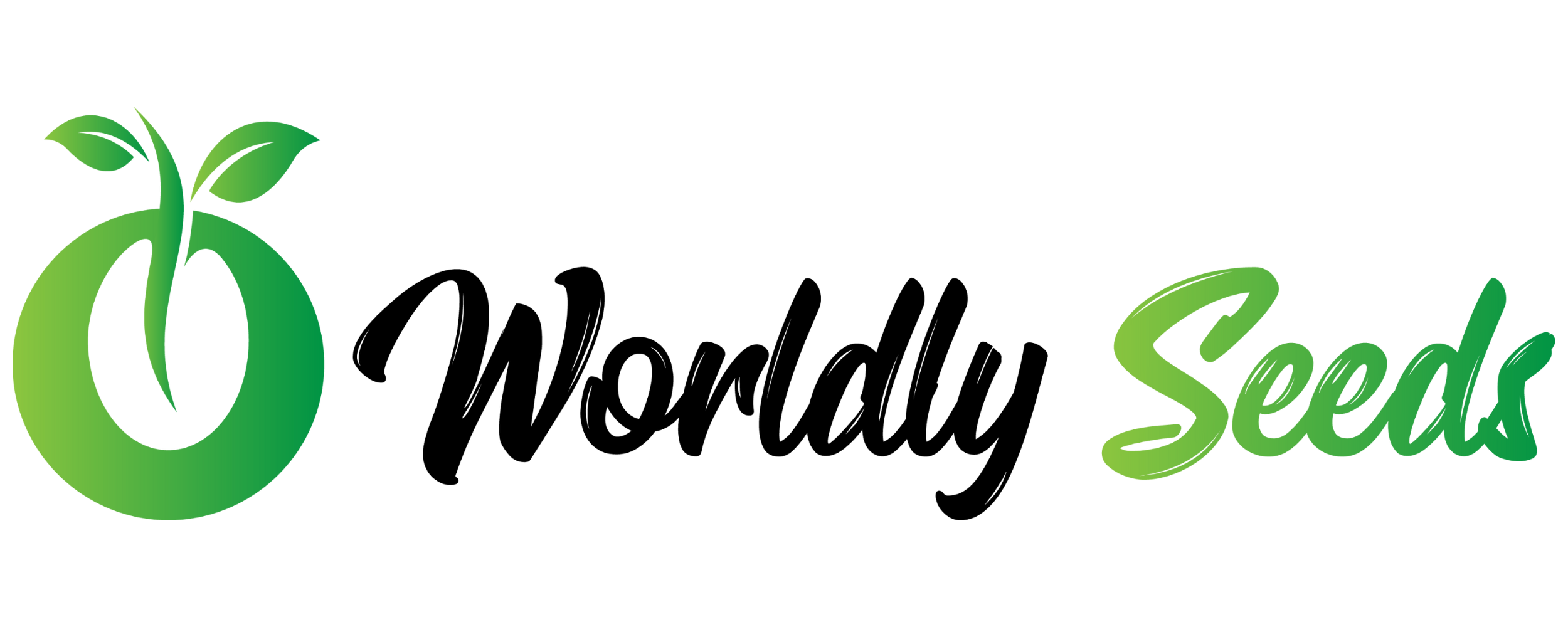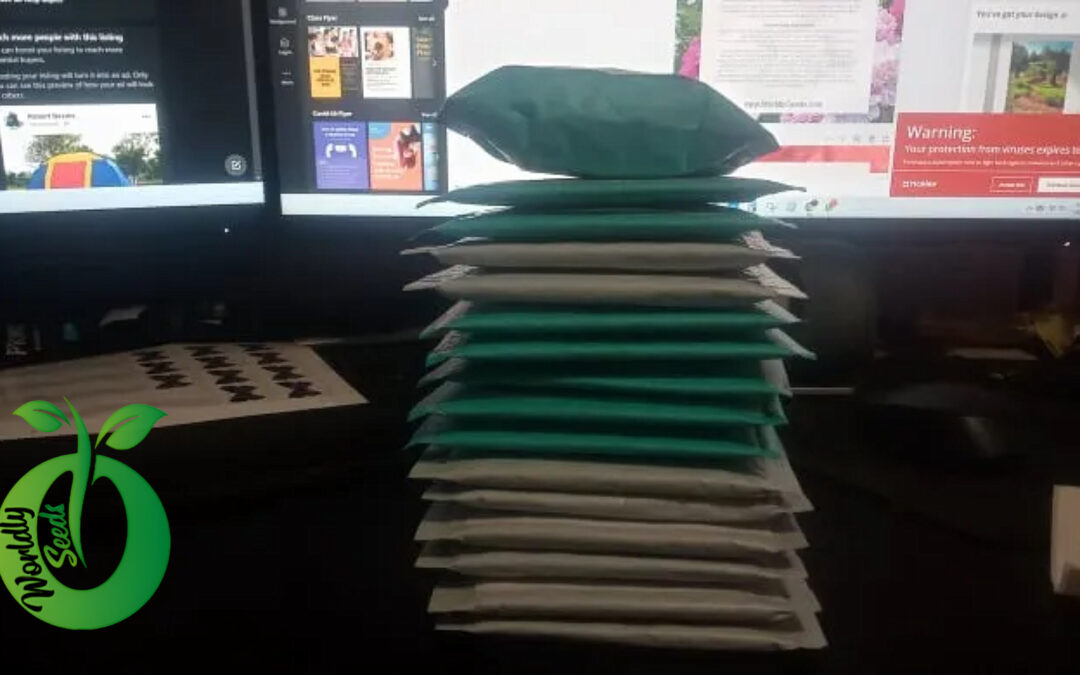Starting a home business with minimal investment and high returns can be challenging, but selling garden seeds is a proven, affordable option requiring only a few hundred dollars. By purchasing bulk seed packets at low prices and reselling them in smaller quantities, you can create significant profit margins, often yielding over 1,000%+ ROI on many products. This business model allows you to invest modestly, limit overhead costs, and achieve substantial returns by targeting a large, established market of gardeners and hobbyists. Here’s a straightforward plan to help you set up and grow your seed business from home.
This business model is ideal for:
- People wanting a low-cost business with high-profit margins
- Anyone with limited startup funds (under $500)
- Individuals who want to start a business but have no ideas
- Those looking for a flexible, home-based income
- Beginners with little to no e-commerce experience
- Gardeners or plant enthusiasts wanting to turn their interest into income
- Entrepreneurs seeking a quick-to-launch side hustle
- People interested in low-maintenance, non-perishable products
- Individuals who want control over their workload and income
Low Start-Up Cost, High Earning Potential
The business model foundation lies in buying seeds in bulk (1oz+), repackaging them, and reselling them in smaller packages, creating high-profit margins from each transaction. Typically, bulk seed packets can be purchased from trusted suppliers like Mountain Valley Seed Company Store on Amazon at a fraction of the resale price.
For instance, you can purchase a 1 oz pack of Beefsteak Tomato Seeds, containing approximately 6,800 seeds, from Mountain Valley Seed Company (also known as True Leaf Market) for just $21.90. By repackaging these seeds into 50-count packets and selling each for $1.79, you can achieve substantial revenue.
Here’s the breakdown:
- Investment: $21.90 for 6,800 seeds
- Resale Price: $1.79 per 50-seed packet
- Total Packets: 136 packets (6,800 seeds ÷ 50 seeds per packet)
- Potential Revenue: 136 packets x $1.79 = $243.44
This setup turns a $21.90 investment into $243.44 in revenue, resulting in over 1,000% ROI. The high demand for seeds and their non-perishable and lightweight nature make this a sustainable and profitable business model. You must also factor in at least $1 for shipping 50 seeds, so that’s $136 to ship 130 packs. However, you can get a pound (108,800 seeds) for $156 or $9.76/ ounce. So, the more you buy, the higher your ROI will be.
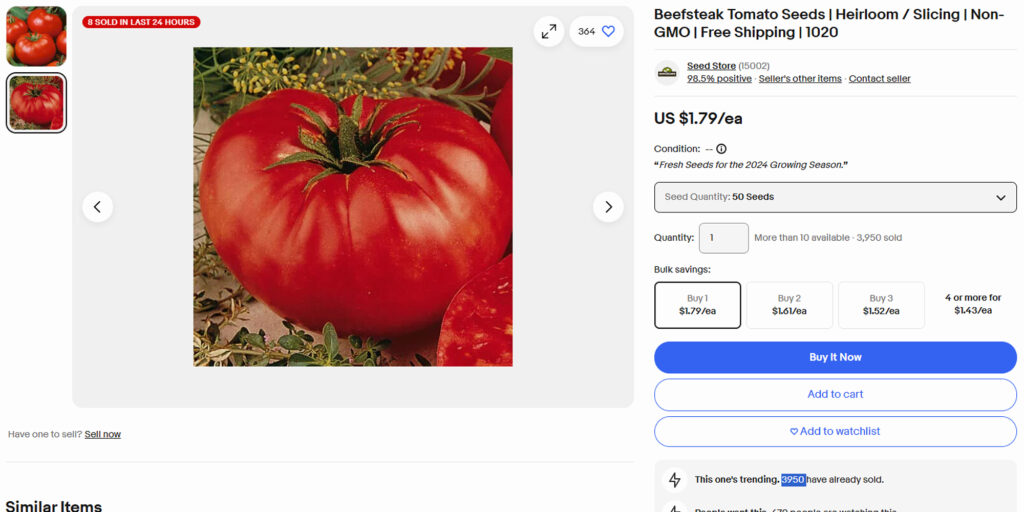
Building Your Seed Business Step-By-Step
Setting up a seed business doesn’t require complicated logistics or experience in e-commerce. With this in mind, here’s a step-by-step plan to get your seed business up and running effectively, including sourcing, packaging, and selling.
1. Sourcing Quality Seeds and Supplies
The success of this business model depends heavily on sourcing high-quality, in-demand seeds that will sell quickly and keep customers coming back. Reliable suppliers like Mountain Valley Seed Company Store and Outside Pride offer several vegetable, herb, flower, and fruit seeds ideal for resale. To get started with an effective seed selection, consider the following top-selling varieties:
- Beefsteak Tomato Seeds
- Yellow Granex PRR F1 Seeds (Sweet Vidalia Onions)
- Beit Alpha Cucumber Seeds
- Tendersweet Carrot Seeds
- Creeping Thyme Seeds
- Wild Flower Seed Mixes
- Dwarf Sunspot Sunflower Seeds
By starting with these high-demand seeds, you can ensure a steady sales flow from the outset. Once you’ve chosen the seeds you want to sell, the next step is to invest in packaging supplies that keep your overhead low while allowing you to fulfill orders efficiently.
2. Essential Packaging Supplies
Having the right supplies is important for setting up your seed business affordably and efficiently. Below is a list of products that will help you maintain low costs while ensuring professional packaging and smooth order fulfillment:
- Thank You Stickers
- Envelopes
- Seed Packaging
- Seal-Fresh Self-Sealing Cellophane Bags
- Thermal Label Printer
- SUFFICIENT QUANTITY: You will receive 4 rolls of thank you stickers, including three colors. Brown, black and pink, 500 …
- HIGH-QUALITY: Thank you for your support my small business label sticker is made of PVC, it is waterproof and easy to fa…
- EXPRESS YOUR THANKS: This self-adhesive sealing sticker label expresses your sincere thanks in a completely new way. Sti…

- #6 3/4 SECURITY TINTED SELF SEAL ENVELOPES; want the very best in secure, security-tinted envelopes with a super strong …
- SUPER SECURITY TINT PATTERN; #6 3 / 4 envelopes designed with a secure, security tint-pattern to protect contents and se…
- 100 ENVELOPE PACK; these envelopes are manufactured with a WINDOW-LESS front panel for the perfect choice for Personal C…

- 2.7×3.5 inch outer size; 2.36×2.36 inch inner size
- 5.5mil thick(one side) thickness kraft paper window bag (writing directly on kraft paper) (plastic film inside)
- The big window very close to the bottom, even if the bag contains very few seeds, you can identify your products from ou…

- Kraft paper window bag (grease proofing plastic film inside)
- Zippers of re-sealable bag make putting in and taking out products easily
- You can heat seal after manual seal to achieve complete storage for your food

- [SUMMARY]: Clear Polypropylene Cello Bag. Peel and Seal Sealable Feature with Resealable Adhesive. The 2X2 poly bag is 1…
- [SIZE]: 1000 Count – 2” Width X 2” Length – Length Excludes Glue Flap
- [PREMIUM QUALITY]: Our 2 X 2 plastic bags are made from the highest quality materials. Each clear bag contains a sealabl…

- Go Wireless with Bluetooth: Connect your Nelko Bluetooth thermal label printer to iOS 13 or later and Android devices vi…
- Print via USB: For Windows 7 or later, Mac OS,Chrome OS, you can connect the desktop label printer via USB cable. Note t…
- Good Helper for Cost Saving: Advanced thermal direct technology is adopted to achieve the printing speed of 150 mm/s, up…

3. Selling Your Seed Packs Online
Your target market for garden seeds includes home gardeners, small-scale farmers, and DIY home startups, all of whom are active on platforms like eBay, Amazon, Etsy, and Facebook Marketplace. Setting up a seller account on these platforms is straightforward, and the broad reach of each marketplace means you can connect with a vast pool of potential daily buyers.
When listing seeds, creating clear, appealing listings with descriptive titles, quality photos, and detailed descriptions highlighting each seed’s quality and characteristics is always appreciated, and it often results in a sale! Platform consistency will also help build your brand and bring repeat buyers to your store.
Maximizing Profits and Scaling Your Seed Business
As with any business, the more strategic you are in scaling and marketing, the higher your profits will be. This section focuses on growth tactics, branding ideas, and expanding your inventory to boost revenue.
Once your business gains traction, branding can add a layer of professionalism that attracts more customers. Custom seed packets with your logo, business cards, and a consistent color scheme significantly differ in perceived values. Additionally, using “Thank You” stickers for each order can boost customer satisfaction and encourage repeat purchases.
To reach even more customers, consider expanding to your website and including social media platforms like Instagram or Pinterest. Each platform offers unique opportunities for visually showcasing your products and connecting with gardening communities, especially during peak planting seasons.
Product Selection and Expansion
To meet various gardening needs, consider adding more varieties or collections like “Save the Bees Wildflower Collection” or “Dwarf Sunspot Sunflower Seeds.” Expanding your inventory allows you to increase your average order size while providing more choices for customers, leading to a more reliable revenue stream.
Tracking ROI and Profit Margins
Understanding your return on investment (ROI) and profit margins is crucial for sustaining and growing your seed resale business. Here’s how to break down potential earnings and keep your strategy on track.
Sample ROI Calculation:
Let’s walk through a sample calculation to see how a small investment can yield a substantial return:
- Seed Investment: $21.90 for a 1oz pack of Beefsteak Tomato Seeds (approx. 6,800).
- Resale Price: Selling 50-seed packets at $1.79 each.
- Total Packets from 1oz: 136 packets (6,800 seeds ÷ 50 seeds per packet).
- Total Revenue from Sales: 136 packets x $1.79 = $243.44.
This calculation shows that an initial $21.90 investment can generate $243.44 in revenue, resulting in over 1,000% ROI.

Shipping Costs and Net Profit
To accurately track profit margins, you’ll need to include shipping costs. For orders under $10, a $1 non-machinable postage stamp is standard, which keeps fulfillment affordable and straightforward. With 136 packets, your estimated shipping cost would be around $136, bringing your total cost (seeds + shipping) to roughly $158.
Net Profit: $243.44 (revenue) – $158 (total costs) = $85.44.
Even with shipping and packaging costs, this model allows you to quadruple your initial investment while keeping operations above standards and impactful.
Scaling Up for Higher ROI
If you purchase seeds in larger quantities, such as a 1lb bag (approximately 108,800 seeds for $156, or about $9.76 per ounce), you can double your ROI. By buying in bulk, you reduce the per-seed cost, which allows you to maintain higher profit margins as you expand your inventory and target larger customer bases. You can also purchase 5lb, 10lb, and 25lb bags, which you’ll want to consider once you get big time!
Monitoring Your ROI and Adjusting Your Strategy
Tracking your ROI on each seed type and adjusting pricing or inventory based on demand will help you maximize profitability. By expanding into high-demand varieties, using efficient packaging strategies, and considering bulk purchasing, you can continually increase your ROI and sustain your business growth over the long term.
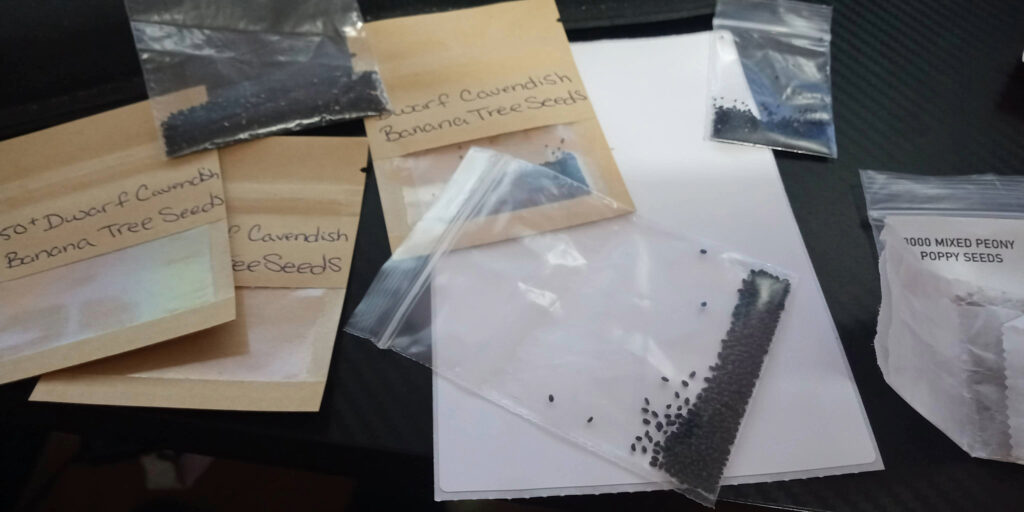
Steps to Starting a New Seed Store
Starting a new seed store involves a few important steps, including choosing a memorable, relevant name that reflects your business. The name should be easy for customers to remember and ideally give them a sense of what you offer. One way to ensure your brand name is unique and available online is by checking domain availability on platforms like NameCheap.com. Here, you can search for domain names and secure the one that fits your business. You can even get a free domain when you purchase shared hosting using the provided link, saving on startup costs.
Once you’ve secured a domain name, it’s wise to reserve your brand name across social media platforms to establish a consistent presence online. This ensures that your brand remains identifiable and accessible across multiple platforms.
Why NameCheap for Domains and Hosting?
NameCheap is an affordable, reliable choice for new businesses looking to secure a domain name and hosting. Here are some reasons why NameCheap stands out:
- Affordable Pricing: NameCheap offers budget-friendly domains and hosting plans, ideal for small businesses or new startups.
- 24/7 Customer Support: NameCheap’s customer service is available round-the-clock, which can be crucial for business owners needing assistance with setup or troubleshooting outside regular business hours.
- User-Friendly Platform: The platform is designed for ease of use, allowing users to register domains, manage settings, and navigate hosting options with minimal technical knowledge.
- Reliable Hosting: NameCheap’s hosting is affordable and secure, making it a strong choice for small businesses that want to ensure their website remains accessible and functional.
Steps for Getting a Domain on NameCheap
- Search for a Domain Name: Go to the Domain Search page on NameCheap.com and start by typing in potential names related to your business. Try different combinations until you find one that suits your brand.
- Choose a Domain and Add to Cart: Once you find a suitable domain name, add it to your cart. The previous link I shared will give you access to free domain options if you purchase shared hosting.
- Select a Hosting Plan: Review NameCheap’s hosting options. Shared hosting is a cost-effective solution for new stores, and you can manage your website through NameCheap’s user-friendly platform.
- Check Out and Complete Setup: After you complete your purchase, NameCheap will guide you through setting up your domain and hosting. Once your website is set up, you can start building your online store.
- Secure Social Media Handles: After securing your domain, lock down your brand name on social media platforms like Instagram, Facebook, Twitter, and Pinterest. This helps establish your brand’s online presence, making it easier for customers to find you.
Completing these preliminary steps will establish a strong foundation for your seed store’s online presence before you launch your store on Shopify or any other platform
Launching a New Seed Store On Shopify
Once your seed business is up and running, building a brand and expanding your online presence can be a game-changer. Setting up a dedicated Shopify store is one of the most efficient ways to enhance your visibility and give customers a central, professional-looking storefront from which to explore and purchase. Shopify’s startup-friendly offer—3 days free and then $1 for the first month—makes it accessible to new business owners aiming to test the waters before committing fully.
Building Your Brand
Creating a recognizable brand adds professionalism and trustworthiness to your business, helping you stand out in a competitive market. Start with:
- Logo Design: A memorable logo can be created affordably in a few hours. I recommend Nine Designers on Fiverr. They can get it done for as low as $10, but I recommend the $40 package, which includes five concepts, vector files, a social media kit, and much more! Plus, UNLINITED revisions until you’re 100% happy and satisfied.
- Custom Packaging: Use branded seed packets, thank-you stickers, and business cards to reinforce your brand identity and encourage repeat purchases.
- Consistent Brand Colors and Theme: Choose a color scheme and aesthetic that resonates with your target market and apply it consistently across your Shopify store, social media, and product listings.
Branding will set your business apart and make it easier for customers to recognize your products, helping you establish a loyal customer base over time.

Setting Up Your Shopify Store
A Shopify store provides an easy-to-navigate, mobile-friendly platform to showcase your seed varieties and streamline the customer buying process. Shopify’s intuitive design tools let you quickly set up product pages, organize collections, and add secure payment options. Here’s why Shopify is an excellent choice for scaling your seed business:
- Professional Look: Your products will be presented in a clean, attractive layout that’s easy for customers to browse.
- SEO-Friendly: Shopify has built-in SEO features to help you rank better on search engines, driving more organic traffic to your site.
- Starter Promotions: Shopify’s free trial (three days free, followed by $1/ month for the first three months) gives you time to set up your store, list products, and establish branding without upfront costs.
Kickstarting Sales with Google Ads
Once your store is ready, use Shopify’s integration with Google and unlock a $500 Google Ads credit (available for new advertisers). With this credit, you can start promoting your products on Google, targeting keywords related to high-demand seeds and gardening essentials. Running ads will help you reach a broader audience immediately, increasing sales momentum before your SEO efforts take effect.
Leveraging SEO for Organic Growth
While ads drive early traffic, optimizing your store for SEO will help attract organic visitors over time. Start by including targeted keywords in your product titles, descriptions, and metadata (e.g., “Buy Beefsteak Tomato Seeds” or “Heirloom Wildflower Seeds for Pollinator Gardens”). A well-optimized store increases your chances of appearing in search results, helping you gain organic traffic and sales without ad spend in the long term.
Setting up a Shopify store with a strong brand presence and a Google ad campaign lets you scale your seed business quickly and efficiently. This will increase sales early on and set the foundation for long-term growth. For SEO services, we recommend SERPseekers.com. They offer affordable, high-quality American English blogging services, including $5/ 300-word product descriptions. You can also contact them at info@serpseekers.com; they will build with you!
Final Tips for Long-Term Success
Success in the seed resale business hinges on consistency, attention to detail, and a commitment to customer service. You can build a profitable and lasting business by carefully selecting high-demand seeds, maintaining quality packaging, and engaging with customers on multiple platforms. With a modest initial investment, this business model offers the freedom of running a home-based venture while capitalizing on one of the most profitable items in the gardening market. If you have any questions or need help getting set up, please contact us here or email info@worldlyseeds.com.
